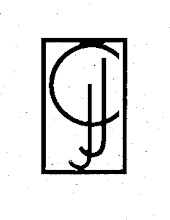 At last I've read the final page of Mark Kurlansky's Salt: A World History. I started it a year ago, which is by no means a reflection of Mr. Kurlansky's writing abilities. My snail's pace is a result of the unusually short attention span I've been afflicted with while unemployed. It seems that for every bit of history I want to absorb into my brain, I have to first push aside the worries that take up so much space there.
At last I've read the final page of Mark Kurlansky's Salt: A World History. I started it a year ago, which is by no means a reflection of Mr. Kurlansky's writing abilities. My snail's pace is a result of the unusually short attention span I've been afflicted with while unemployed. It seems that for every bit of history I want to absorb into my brain, I have to first push aside the worries that take up so much space there.But now I'm done and I feel liberated—free to start a new round of books in the year beyond My Year of Unenjoyment.
Salt is filled with wondrous details about world history—which, of course, includes the tragedies that salt has incited. Wars were fought over it, countries' borders were changed or eliminated for it. Kurlansky interweaves histories not only of countries and powermongers, but also histories of commerce, cultures, cooking, exploration, and technology. If you're a trivia junkie, this is a must-read. Some tidbits:
 • Detroit sits on a 1,400-acre salt mine.
• Detroit sits on a 1,400-acre salt mine.• Prior to the 7th century, the Italian mainland was quite a distance from Venice—the commercial epicenter for salt and other commodities of southern Europe. The water between these two land masses was called the "Seven Seas." And the phrase to sail the Seven Seas meant, literally, to sail this 25-mile stretch filled with sandbars, which required skilled navigation and probably a dose of luck.
• Many countries mandate that iodine be added to salt sold for consumption in order to prevent thyroid problems. In China, this requirement forced many small salt producers into the black market for varying reasons: They couldn't afford the iodine, they didn't want this extra governmental control over their businesses,
 they thought the additive would taint the purity and taste of the salt. Some of the black market salt producers conduct business with Myanmar highland tribespeople who live too remotely to purchase treated salt from their own country. For the Chinese salt, they trade exotic endangered animals used by the Chinese for medicinal purposes. Sadly, the salt the tribespeople believe to be iodized is not.
they thought the additive would taint the purity and taste of the salt. Some of the black market salt producers conduct business with Myanmar highland tribespeople who live too remotely to purchase treated salt from their own country. For the Chinese salt, they trade exotic endangered animals used by the Chinese for medicinal purposes. Sadly, the salt the tribespeople believe to be iodized is not.• What goes down into a salt mine doesn't always come back up. Scores of animals used for transporting were left to die (or were killed) in abandoned salt mines. Today, trucks, tractors, bulldozers, and other equipment lowered into salt mines piece by piece and then assembled underground are left there once the mine is no longer productive. Companies say it's not cost-effective to do otherwise.
• A salt mine in Poland began holding daily Catholic church service
 s for its workforce in 1689. The miners began carving religious figures into the rock salt,then a chapel complete with bas-relief scenes on the walls and ceiling. The miners continued carving through the decades—chandeliers, a ballroom, dining tables—and soon the salt mine sparked a new revenue stream for the government: tourism. Affluent guests visited and attended parties courtesy of the Polish Crown. And the Wieliczka Salt Mine Band accompanied the revelry (salt mines apparently have excellent acoustics). Today nonroyals may tour the mine.
s for its workforce in 1689. The miners began carving religious figures into the rock salt,then a chapel complete with bas-relief scenes on the walls and ceiling. The miners continued carving through the decades—chandeliers, a ballroom, dining tables—and soon the salt mine sparked a new revenue stream for the government: tourism. Affluent guests visited and attended parties courtesy of the Polish Crown. And the Wieliczka Salt Mine Band accompanied the revelry (salt mines apparently have excellent acoustics). Today nonroyals may tour the mine.Finishing Salt has been an uplifting way to start the final day of My Year of Unenjoyment.
And now, dear readers, let's toss a pinch of salt over our left shoulders as we look toward a brighter new year.



No comments:
Post a Comment